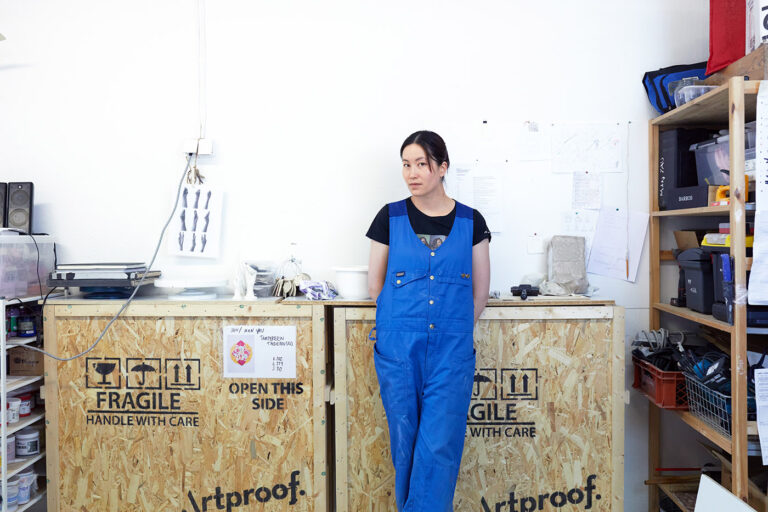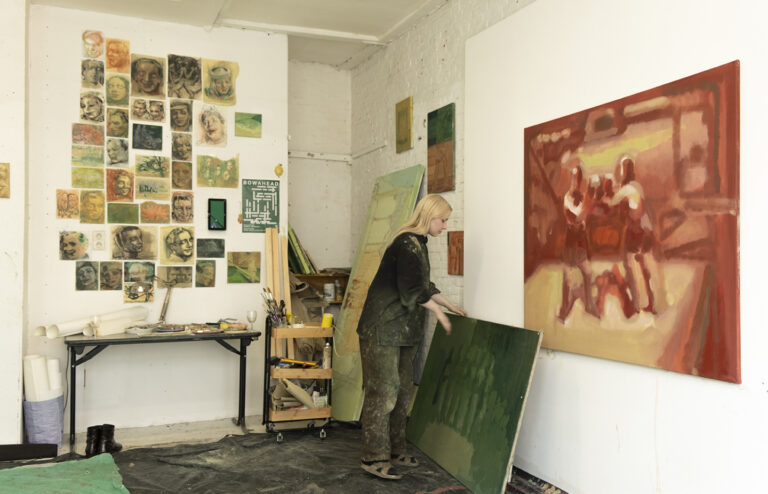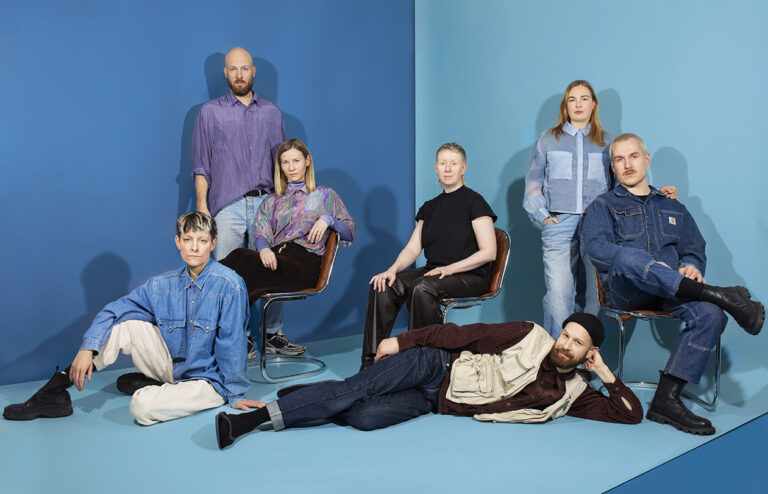New Memories of New York’s Past
Artist Panos Balomenos explores the individual's relationship to societal power structures. A residency period in New York opened up a perspective into the city’s past—still visible in its streets today.
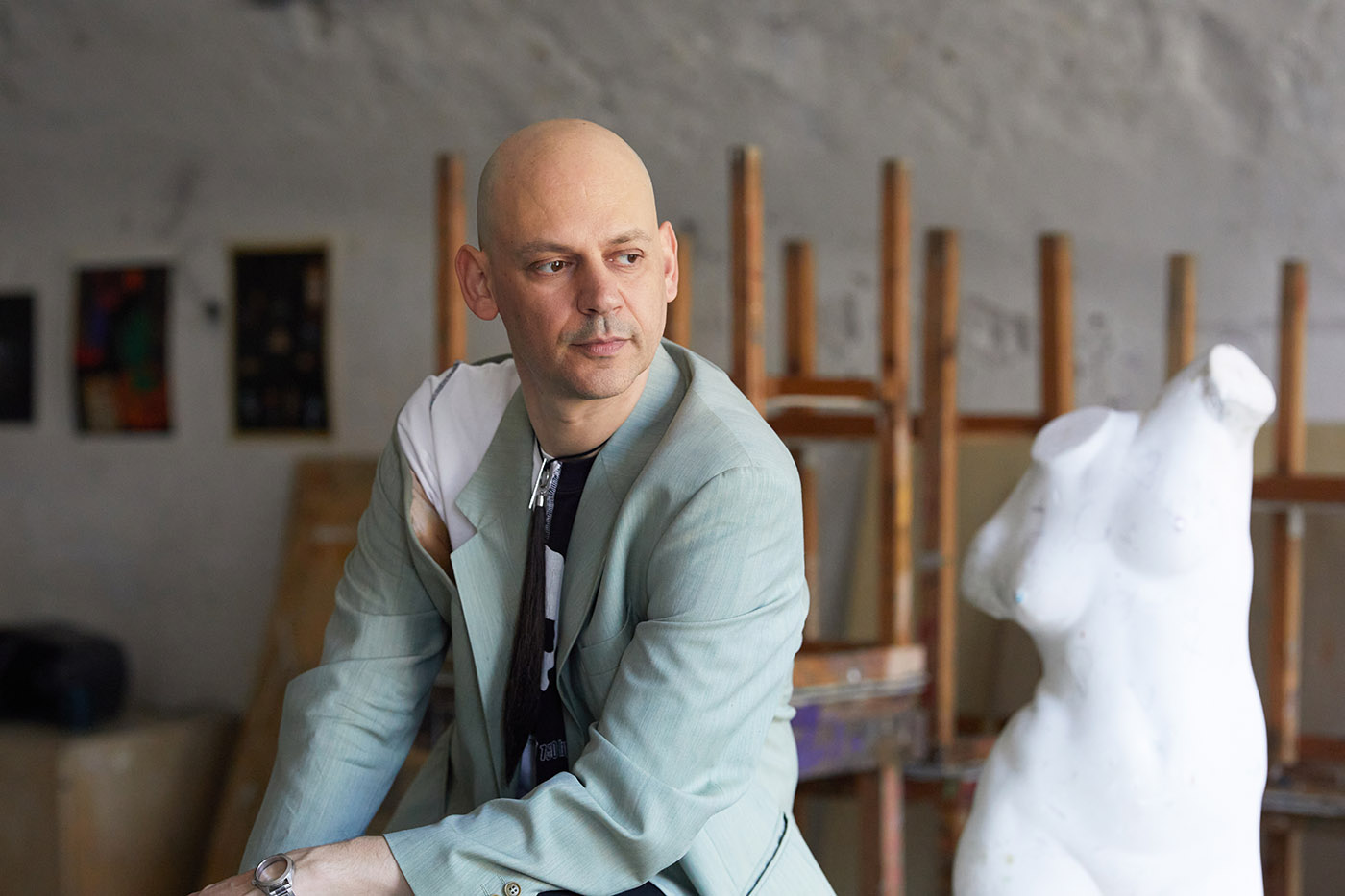
A vivid red flower, tattooed onto a man’s forearm, is painted on paper. The work, which is part of Balomenos’s ten-piece watercolor series, stems from the artist’s reflections on identity.
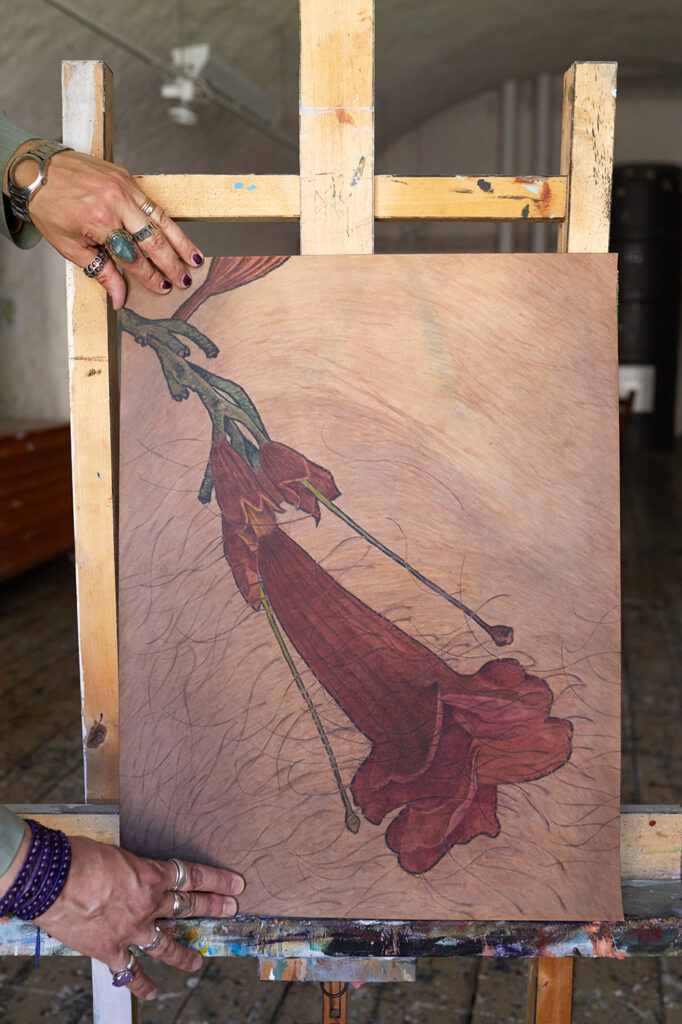
When Balomenos was about ten years old, his father declared bankruptcy in their home country, Greece, and had to leave the family to repay his debts by working in construction in New York. His father’s departure was a traumatic moment for the entire family—yet the photos and stories he showed from the big city fascinated young Balomenos.
In July of last year, Balomenos traveled to New York, where he spent three months at the Triangle Residency, made possible by a grant from the Finnish Cultural Foundation’s residency program. During the day, he worked in his studio; in the evenings, he visited art gallery openings.
“I work even more intensely during residencies. It’s hard to say whether that’s because of the pressure to produce something concrete, or because the place itself is so inspiring. I don’t go on residencies just to be somewhere else, but because there’s a compelling element in the place. That’s how I know I’m in the right place,” he says.
Personal is political
Born in Athens and living in Finland since 2003, Balomenos completed his master’s degree at the Academy of Fine Arts and has worked internationally since the beginning of his career.
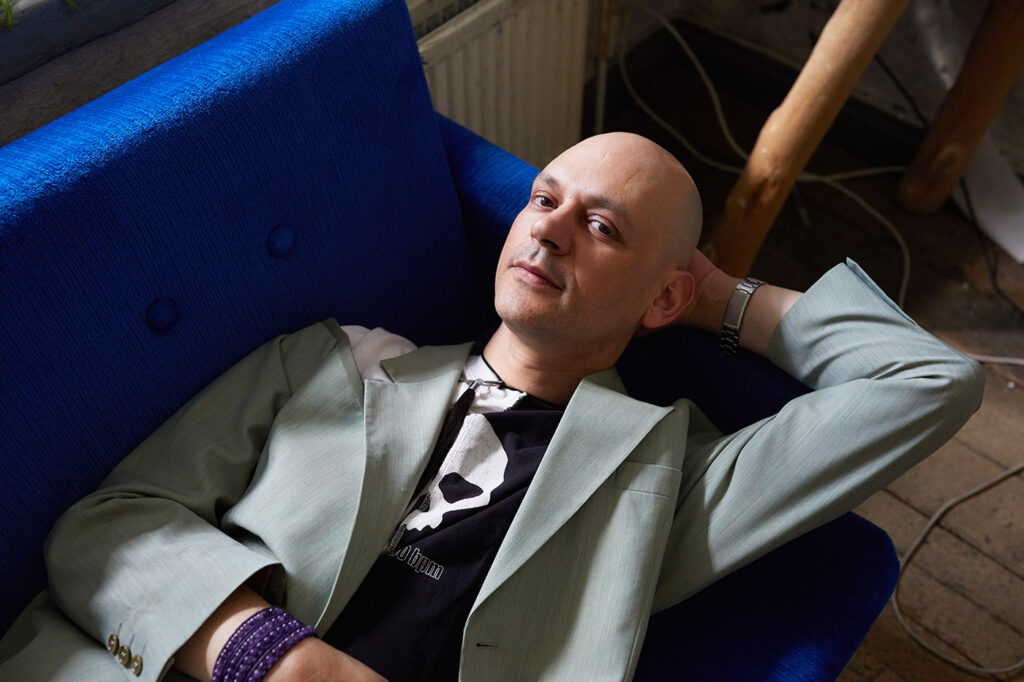
He regards personal experience as the starting point of his practice but simultaneously addresses broader political issues and societal power structures that affect individuals and members of different subcultures. Balomenos’s works combine contemporary phenomena with historical references. The final result is usually a painting, though sometimes a performance, installation, or a site-specific piece.
In New York, Balomenos examined his own relationship to a city that feels both foreign and familiar through the stories of his father. He noted, for example, that many of the plants beautifying the city—like the red flower in the painting, the Chinese trumpet vine—are non-native species.
Even the city’s so-called local food scene is a blend of different national influences and ingredients. In fact, the entire international metropolis is a wild mixture of cultures.
“The flower in the painting represents my father and his experiences in New York. I feel as though they are a part of me—tattooed into my skin. Immigrants, including my father, built this beautiful city that so many admire. At the same time, immigration is viewed negatively. I’m interested in that contradiction,” says Balomenos.
Art needs room for experimentation
According to Balomenos, the far-right-leaning politics currently seen in the United States are reflected not only in attitudes toward immigration. He also sensed the effects of a polarized atmosphere among people working in the arts.
His residency coincided with the months leading up to last fall’s presidential election, and there was a palpable sense of fear about the future. People knew what was coming, but it was a painful topic to discuss for many working in the cultural field.
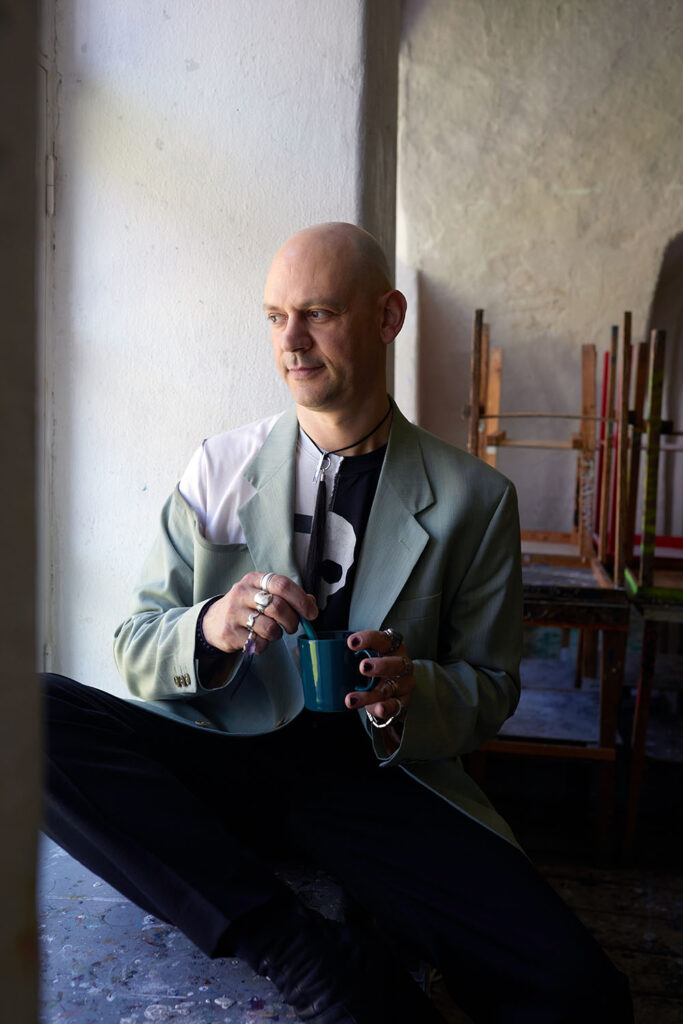
“A close friend of mine was supposed to participate in a group exhibition featuring only LGBTQIA2S+ artists. Two months after the election, the show was canceled. The decision was deeply troubling, and it related to how public funds are allocated,” he explains.
Panos Balomenos”A close friend of mine was supposed to participate in a group exhibition featuring only LGBTQIA2S+ artists. Two months after the election, the show was canceled.”
Balomenos says he has also observed how political pressures have affected art students in Finland too. He has led a weekly painting workshop at Art School Maa since 2015. According to him, young people today are afraid to express themselves freely, and there is less space for experimentation than before.
He believes that political attitudes have influenced the expectations young people place on their own work. Success is measured in concrete results and numbers. If a single exhibition doesn’t sell, it’s seen as a failure or a mistake.
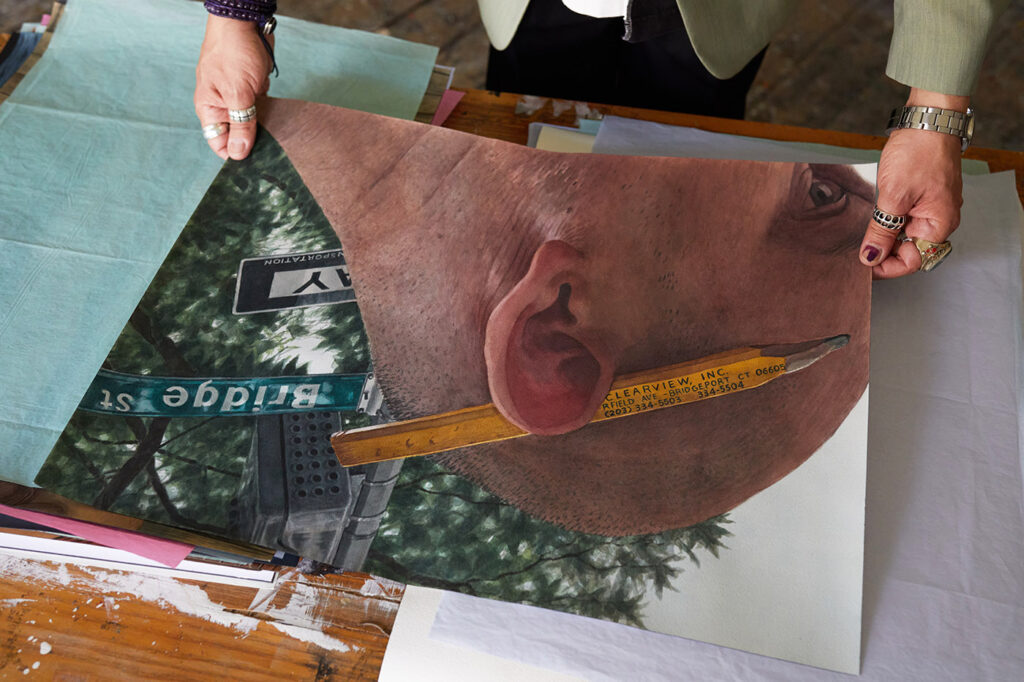
“Instead, we should ask whether the exhibition is impactful and meaningful, because in art, results don’t show immediately. The role of artists is to imagine and create what the society is lacking. Right now, I feel that we are lacking empathy, humanity, love, and mutual respect,” Balomenos states.
